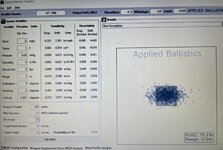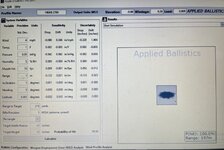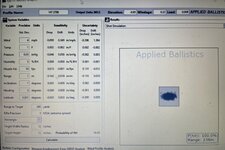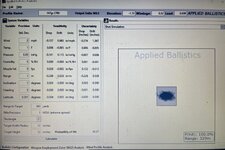So what does that do to hit rate % in your criteria for 95% hit rate? With 4moa shooter +\-4mph wind call.
To be clear- I didn’t say a 95% first round hit for me. I said, high probability (+/- 95%) that I will be standing over the animal at the end.
There are situations that have a 95% probability of a first round lethal hit, but other factors lead to a reduced probability of recovery if I miss suck that successful probability drops low enough that I will not take the shot. In contrast, there are times where my first round hit probability is say 80% but due to terrain, animal, or the situation, the probability of recovery/successful outcome is 99% and I will shoot. That may be due to probability a second round hit by seeing my own trace or splash, ability to get multiple shots, tracking conditions, etc
Just curious on the ranges a guy needs to start really considering not shooting. At the range with field equipment and positions I’m reading maybe I’m over confident.
To answer your question:
With a 6.5cm at 2,700fps MV, a 4moa shooter (that’s 4 MOA rested), +/- 4mph wind call, 12” target, and 95% first round hit rate-
140AB is 95% at 225 yards-
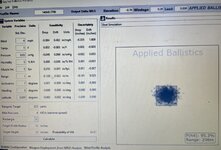
147gr ELD-M is 95% at 240 yards-
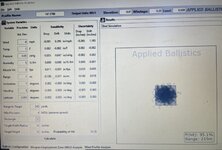
This will seem very short for most. But think about this- if you’ve killed more than ten game animals in the last few years, how many have been missed or weren’t great first shots, and what is the range that you know without a doubt the outcome? For the vast majority of hunters that actually zero their rifle every year and put in some modicum level of practice at all…. It’ll be about 200’ish yards that they know they will kill a deer without issue. 300 yards they’ll take the shot, but they aren’t as confident. 400 yards is pushing it.
Now, for arguments sake, let’a take an average hunter. No one, or almost no one would say a hunter with a scoped bolt action rifle taking a 300 yard shot is wildly unethical even if they miss or wound an animal- most would shrug and say “that’s hunting”. So let’s look at their hit rate.
From what I’ve seen and what most have seen from public ranges of hunters trying to zero the week before season opens- 80+ % of hunters are 8-10 MOA shooters. That’s their rifle, them, and field positions. I’ve seen and measured enough hunters and shooters to say that pretty confidently. Now, most hunters do not have a zeroed rifle by almost anyones definition on this forum, but let’s say they get it “good enough”.
And let’s put them in a prone over backpack position, so let’s say 6’ish MOA (which admittedly is being generous), most of those hunters are shooting less than 100 rounds a year with their hunting rifle. At 300 yards that person has a first round hit rate with a 6.5cm and 140gr Accubond of 55%
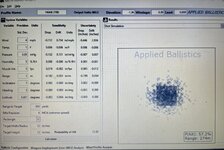
This doesn’t take much thinking to see the reality of it. Either think back on how many legitimately ranged 300 yard shots you’ve taken on deer sized animals that were missed or not chest hit for the first shot; or think about the people you know and hear and the amount that admit to missed/wounded animals at real 300 yards. And very few people would tell an average hunter that it is unethical that they took a shot at 300 yards prone.
So now, let’s look at where 55% hit rate is for a 2 MOA shooter (practiced and trained), and 4 mph (practiced) wind call- this is a person that is shooting 500+ rounds a year, most of them away from a bench and using field positions, and some wind practice.
55% for that “practiced” hunter is 460 yards.

And interestingly most people that do practice but aren’t training constantly, would intuitively say that they’re good to 450’ish maybe 500 yards, but they’d really like to be closer. This isn’t wild. This is such a truism that I can and have shown it to people by just having them shoot on demand from field positions.
So now let’s take a truly trained and competent shooter that practices regularly in broken, mountainous terrain multiple times a month, to the tune of several thousand rounds a year, and they are a 1.5 MOA rested field shooter.
Using a 140gr AB (which that person probably would not do) they have the same hit rate (55%) at 625 yards that the slightly above average shooter has at 300 yards.
625 yards-
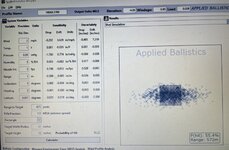
The exact same shooter, but using a 147gr ELD-M instead has a 75% first round hit rate at 625 yards.
